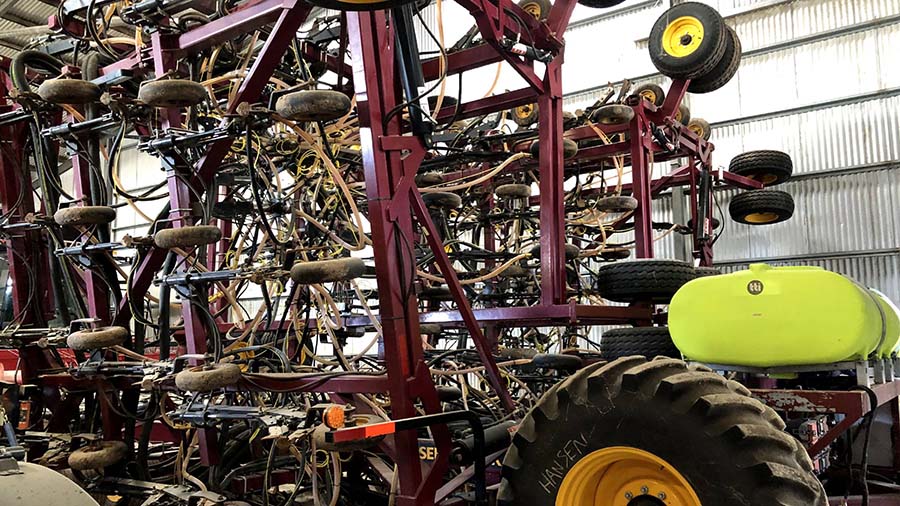Rhizoctonia is an ongoing constraint that has always restricted cereal yields for South Australian grower Andrew Hansen.
However, paying close attention to the work of South Australian Research and Development Institute (SARDI) researcher Dr Alan McKay and his team has seen Andrew conduct PreDicta® B testing to identify problem areas, improve his seeding system and implement a number of cultural measures to help reduce losses from the disease.
The mixed farmer from Coomandook, in SA's upper south-east, who farms with his brother Garry, crops about 6700 hectares. He grows wheat, barley, canola, lupins and oaten hay alongside a Merino sheep flock and Angus cattle herd.
In its worst patches, Andrew conservatively estimates losses from Rhizoctonia can be up to 30 per cent in cereals on his property.
"Rhizoctonia has always been more prevalent on our shallow stony soils and our deeper non-wetting sands, which we put down to the nature of those soils in that they tend to dry out a lot quicker and take longer to wet up," Andrew says.
"Originally we would see Rhizoctonia as big bare patches and areas where crops just wouldn't perform, but now we are finding we don't actually see it until later in the year."
This is consistent with observations from Dr McKay, who also conducts trial work on the Hansens' property.
Management tactics
Andrew says crop rotations, particularly the introduction of canola, have been a huge benefit in reducing Rhizoctonia damage.
"We have found that summer weed control, good rotations and good nutrition, especially early in the season, is vitally important in managing Rhizoctonia," he says.
"Good early nutrition is as important as anything - making sure crops are healthy enough to withstand the Rhizoctonia.
"It's an opportunist disease. When the crop is suffering for some other reason, that's when Rhizoctonia becomes more prevalent.
"The least amount of opportunity we can give it to express itself, the less impact it will have on crops."
Good early nutrition is as important as anything - making sure crops are healthy enough to withstand the Rhizoctonia.
Barley sown into wheat stubble has been identified as the most high-risk part of the Hansens' rotation when it comes to Rhizoctonia.
To help manage this, they use a liquid system on their seeder which enables them to apply fungicides - along with micro and macro nutrients - at seeding to give the crop the best possible start.
Mechanics

The Hansens use a liquid system on their seeder which enables them to apply fungicides - along with micro and macro nutrients - at seeding to give the crop the best possible start. Photo: Andrew Hansen
"We have a paired-row seeding system, which enables some cultivation alongside and below the seed - which also helps with Rhizoctonia," Andrew says.
"Initially our liquid system was set up just to place a liquid stream with fungicide below the seed, which was giving reasonable control of Rhizoctonia early in the season when the primary roots were accessing the liquid stream," he says.
"However, we were finding that later on in the season - when the crown roots became more active - they were getting attacked quite severely at times and more so in our problem soils.
"For the first time this year, we have implemented a split liquid system where we are putting some liquid below the seed and some above."
This approach was inspired by Dr McKay's trials, Andrew says.
"Basically, we are trying to replicate to the best of our ability the system that has given the best control in Dr McKay's trials," he says.
"The crops definitely seemed more even in their establishment, but we will have to wait and see the difference at harvest time."
More information: Andrew Hansen, andrew@hansenfarms.com.au

























































